Image of the Day: July 2011
Got Any Gum?
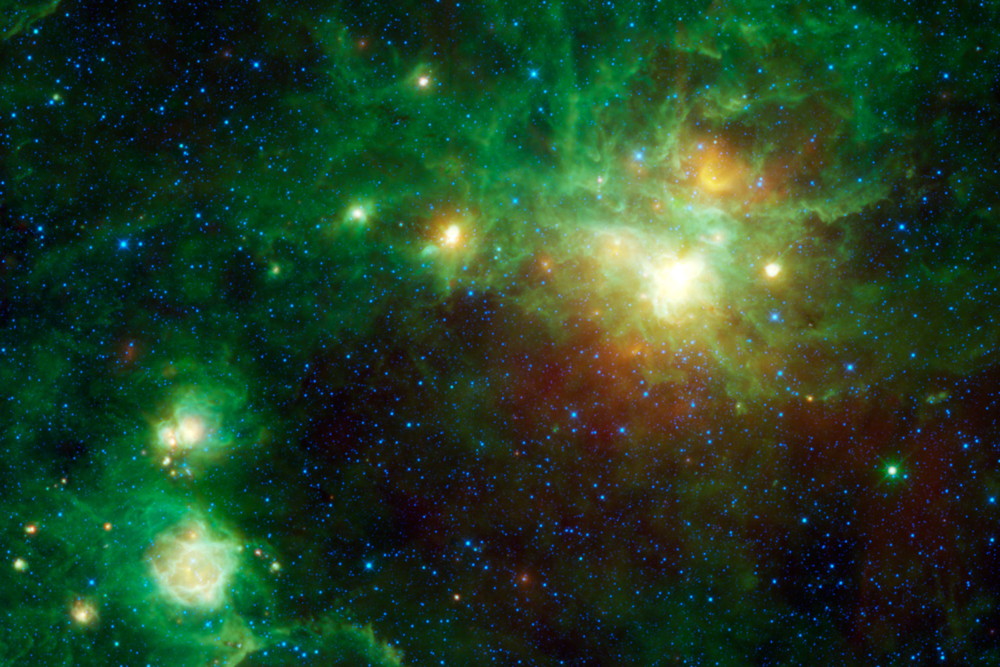
Friday, July 1, 2011: This image, taken by NASA’s Wide-field Infrared Survey Explorer (WISE), features several star-forming regions. There are five distinct centers of star birth in this one image alone. Star-forming nebulae are clouds of gas and dust that have been heated up by nearby stars recently formed from the same cloud. The largest, brightest cloud, in the upper right is known as Gum 22. Going counter-clockwise from Gum 22, the other catalogued nebulae in the image are Gum 23 (part of same cloud as 22), IRAS 09002-4732 (orange cloud near center), Bran 226 (upper cloud of the two at lower left), and finally Gum 25 at far lower left.
—Tom Chao
The Rockets' Red Glare
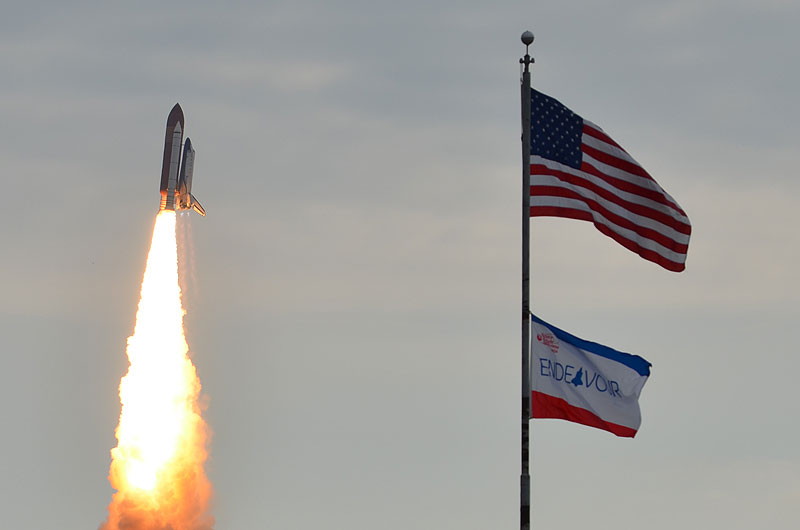
Tuesday, July 5, 2011: Space shuttle Endeavour appears to fly past flags in the foreground on its way to the International Space Station. Launch of the STS-134 mission took place at 8:56 a.m. EDT on May 16, 2011.
—Tom Chao
Shadows on the Moon
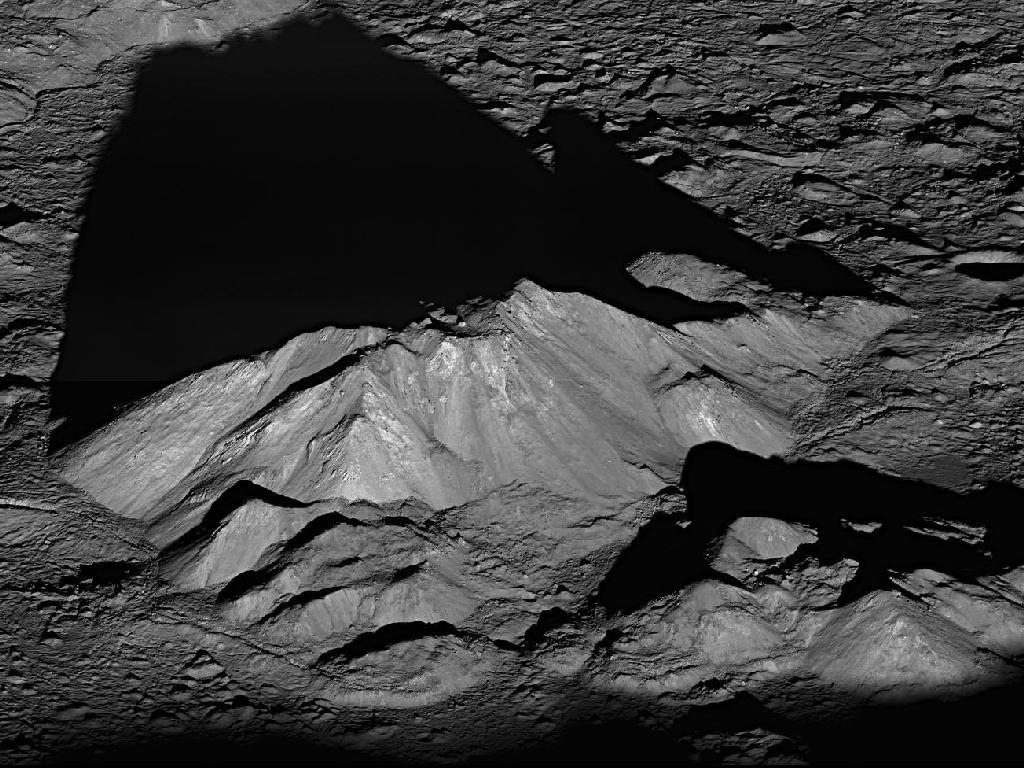
Wednesday, July 6, 2011: On June 10, 2011, NASA's Lunar Reconnaissance Orbiter angled its orbit 65° to the west, allowing the spacecraft's cameras to capture a sunrise view of the moon's Tycho crater. Tycho is located at 43.37°S, 348.68°E, and is about 51 miles (82 kilometers) in diameter. The summit of the central peak is 1.24 miles (2 kilometers) above the crater floor. The distance from Tycho's floor to its rim is about 2.92 miles (4.7 kilometers). Tycho crater's central peak complex, shown here, is about 9.3 miles (15 km) wide, left to right (southeast to northwest in this view).
—Tom Chao
Doors Close in Five Seconds
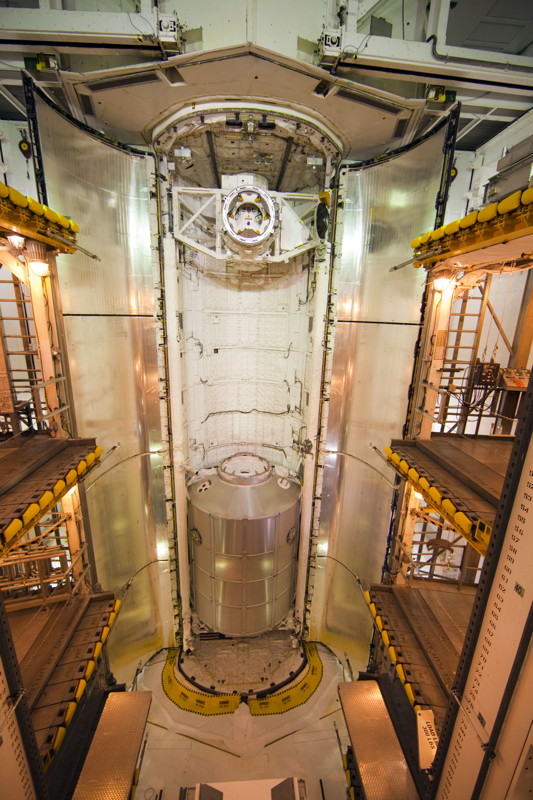
Thursday, July 7, 2011: At Launch Pad 39A at NASA's Kennedy Space Center in Florida, space shuttle Atlantis' payload bay doors close around the Raffaello multi-purpose logistics module (MPLM) payload for Atlantis' STS-135 mission to the International Space Station. Commander Chris Ferguson, Pilot Doug Hurley and Mission Specialists Sandra Magnus and Rex Walheim are slated to lift off on July 8, 2011, taking with them the MPLM packed with supplies and spare parts to the station. STS-135 will be the 33rd flight of Atlantis and the 135th and final mission of NASA's Space Shuttle Program.
—Tom Chao
Take a Walk Down the Firing Room
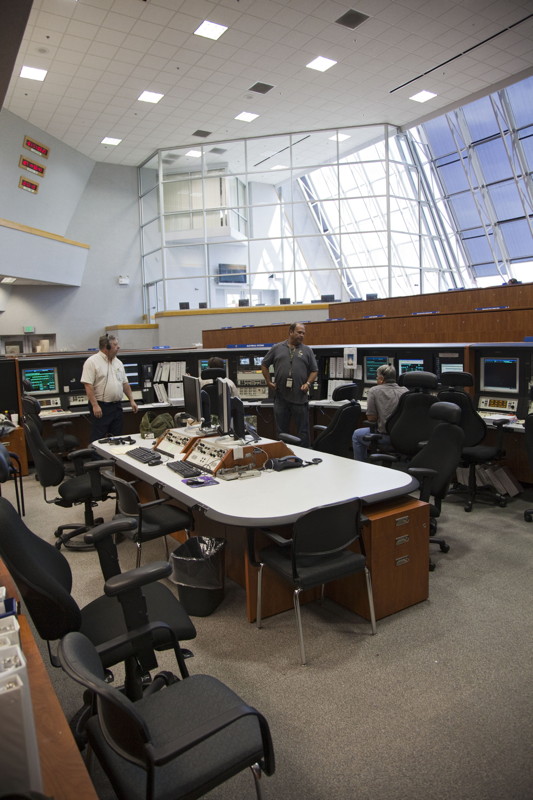
Friday, July 8, 2011: In Firing Room 4 in the Launch Control Center at NASA's Kennedy Space Center in Florida, launch team members sit at their consoles preparing for space shuttle Atlantis' STS-135 mission to the International Space Station. Atlantis and its crew of four are scheduled to lift off on July 8, 2011, to deliver the Raffaello multi-purpose logistics module packed with supplies and spare parts to the station. STS-135 will be the 33rd flight of Atlantis, the 37th shuttle mission to the space station, and the 135th and final mission of NASA's Space Shuttle Program.
—Tom Chao
A long time ago in a galaxy far, far away …
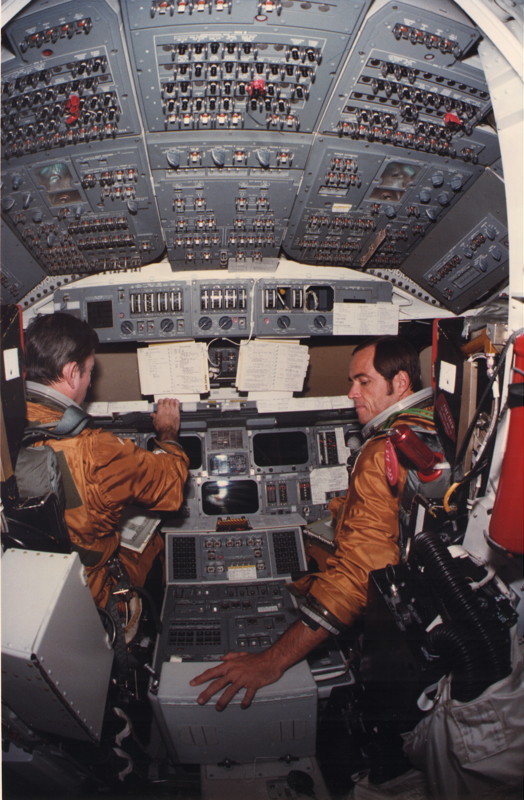
Monday, July 11, 2011: In honor of the final space shutle flight, STS-135, here's an image of astronauts John W. Young (left), commander, and Robert L. Crippen, pilot, the prime crew members for NASA's first space shuttle flight, STS-1, way back in 1981. Here they are seen logging time in the shuttle orbiter Columbia in the orbiter processing facility (OPF) at Kennedy Space Center (KSC).
—Tom Chao
Boom Goes the Orbiter Boom Sensor System

Tuesday, July 12, 2011: Space shuttle Atlantis floats serenely above the Earth in this image taken by one of the crew members from the aft flight deck during the mission's second day of activities in Earth orbit. Earth's horizon and aft sections of the shuttle are visible, while the orbiter boom sensor system (OBSS) sits on the starboard side of the spacecraft shortly before the OBSS was remotely maneuvered into position to start survey of the spacecraft's thermal protection system (TPS). The OBSS later checked for damage caused by ascent debris or anything that might endanger the shuttle's ability to return to Earth safely.
—Tom Chao
Get the Space.com Newsletter
Breaking space news, the latest updates on rocket launches, skywatching events and more!
The Perfect Storm
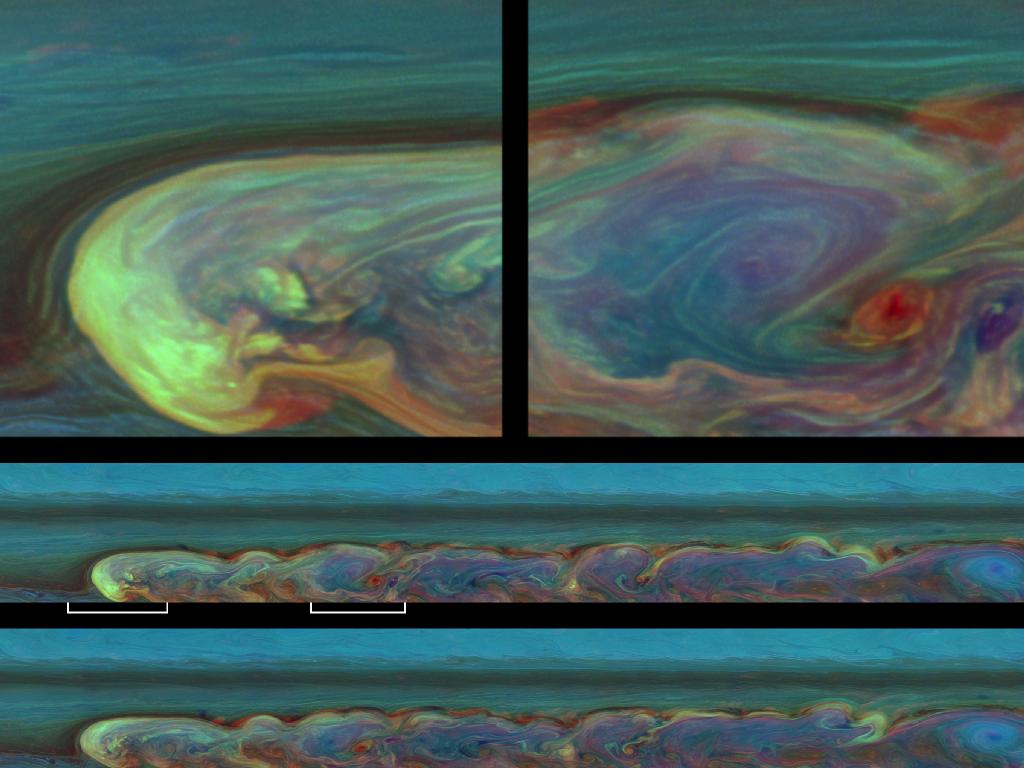
Wednesday, July 13, 2011: A huge storm on Saturn has developed from a small spot that appeared 12 weeks earlier in Saturn's northern mid-latitudes. This storm, still active, is the largest and most intense observed on Saturn by NASA’s Voyager or Cassini spacecraft. As seen in these and other Cassini images, the storm encircles the planet — whose circumference at these latitudes is 186,000 miles (300,000 kilometers). From north to south, it covers a distance of about 9,000 miles (15,000 kilometers), which is one-third of the way around the Earth. It encompasses an area of 1.5 billion square miles (4 billion square kilometers), or eight times the surface area of Earth. The frames at top are enlargements from the middle mosaic consisting of 84 separate images.
—Tom Chao
Embraceable You
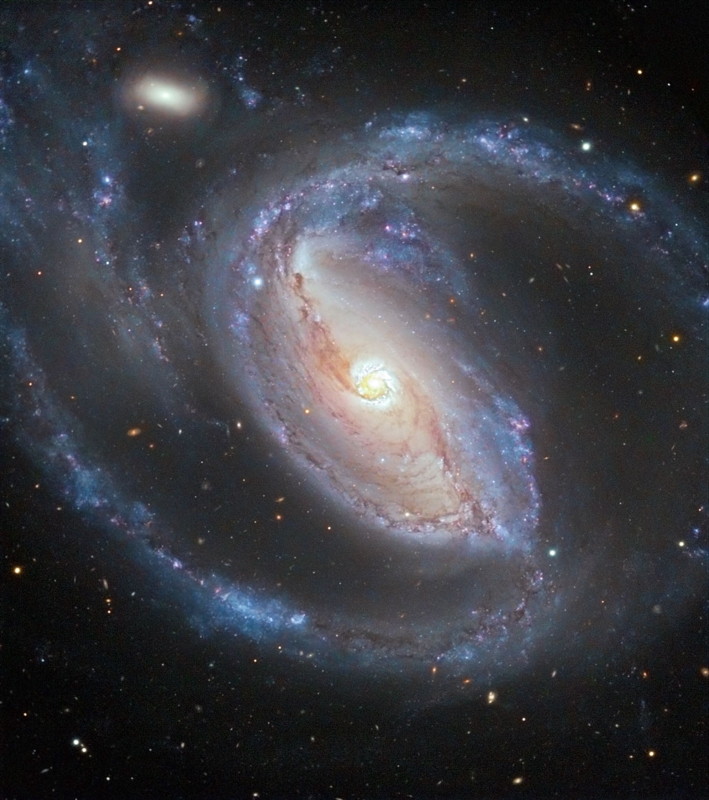
Thursday, July 14, 2011: The Seyfert galaxy NGC 1097, in the constellation of Fornax (The Furnace), is seen in this image taken by ESO’s Very Large Telescope (VLT). A tiny elliptical companion galaxy, NGC 1097A, is also visible at the top left. There is evidence that NGC 1097 and NGC 1097A have interacted in the recent past. NGC 1097, the larger galaxy, also has four faint jets — too faint to be seen in this image — that emerge from its center, forming an X-shaped pattern, and are the longest visible-wavelength jets of any known galaxy.
—Tom Chao
By the Dawn's Early Light
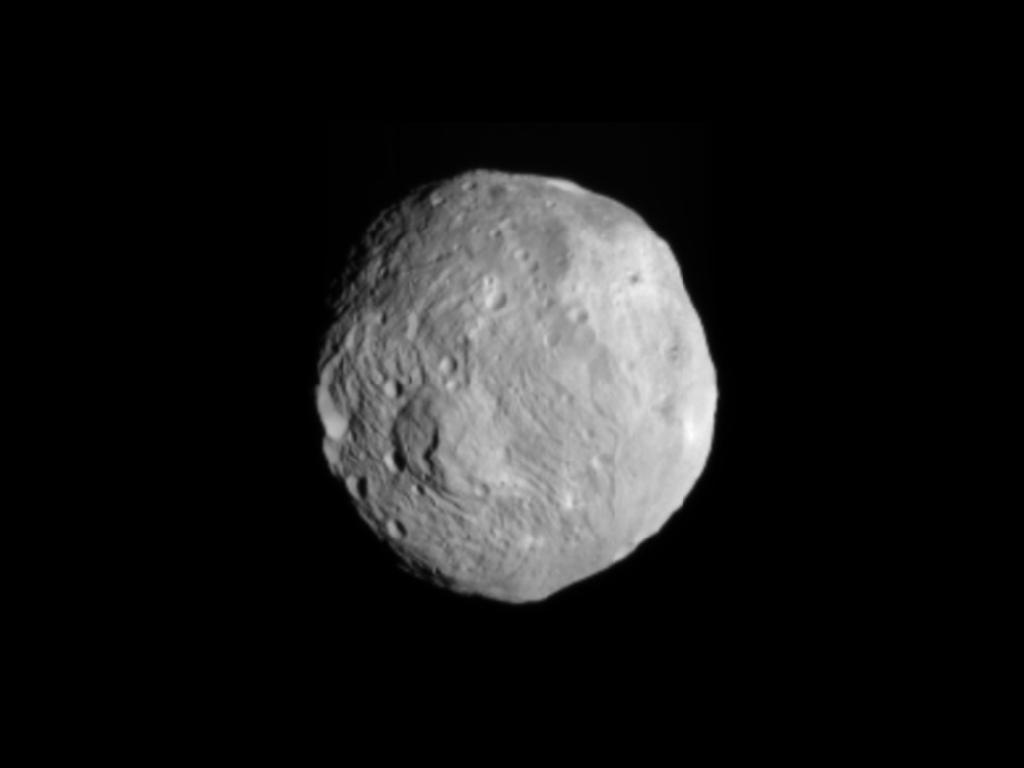
Friday, July 15, 2011: NASA's Dawn spacecraft obtained this image of the giant asteroid Vesta on July 9, 2011. The image was taken from a distance of about 26,000 miles (41,000 kilometers) away from Vesta, which is also considered a protoplanet because it is a large body that almost became a planet.
—Tom Chao
Dock This Way

Monday, July 18, 2011: The International Space Station has space shuttle Atlantis docked to it at right, and a Russian Soyuz docked to Pirs, below the sun at far left. In the center foreground sits the Alpha Magnetic Spectrometer (AMS) experiment installed during the STS-134 mission. AMS is a state-of-the-art particle physics detector designed to use the unique environment of space to advance knowledge of the universe and lead to the understanding of the universe's origin by searching for antimatter and dark matter, and measuring cosmic rays.
—Tom Chao
Join our Space Forums to keep talking space on the latest missions, night sky and more! And if you have a news tip, correction or comment, let us know at: community@space.com.

Space.com is the premier source of space exploration, innovation and astronomy news, chronicling (and celebrating) humanity's ongoing expansion across the final frontier. Originally founded in 1999, Space.com is, and always has been, the passion of writers and editors who are space fans and also trained journalists. Our current news team consists of Editor-in-Chief Tariq Malik; Editor Hanneke Weitering, Senior Space Writer Mike Wall; Senior Writer Meghan Bartels; Senior Writer Chelsea Gohd, Senior Writer Tereza Pultarova and Staff Writer Alexander Cox, focusing on e-commerce. Senior Producer Steve Spaleta oversees our space videos, with Diana Whitcroft as our Social Media Editor.









